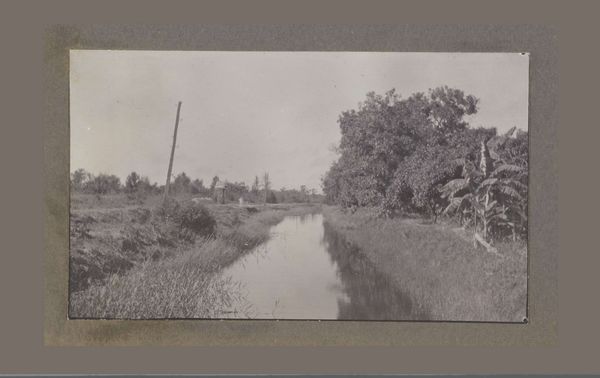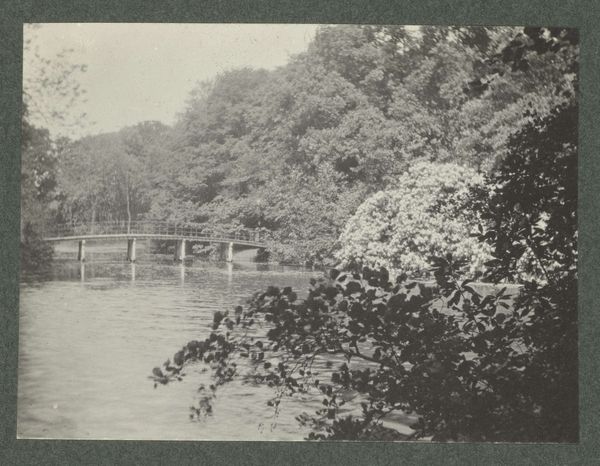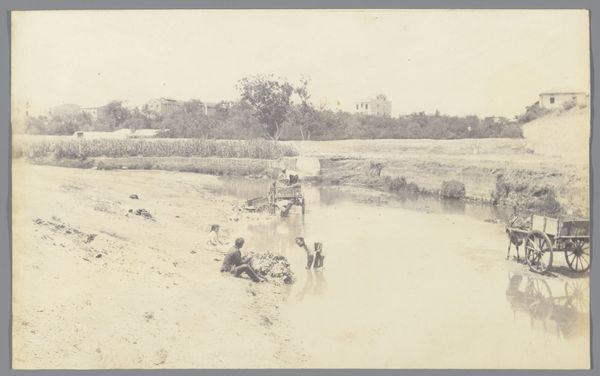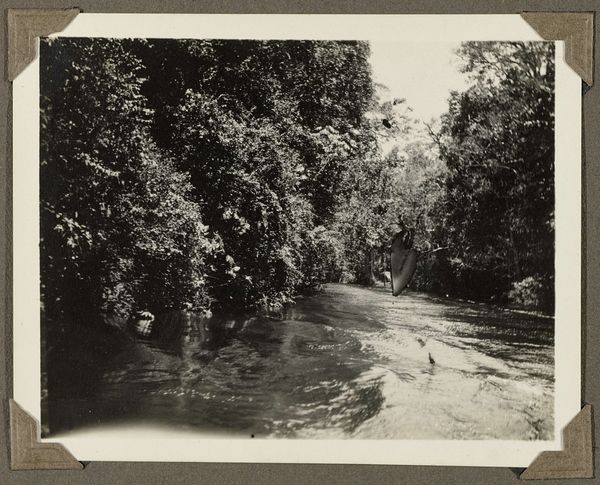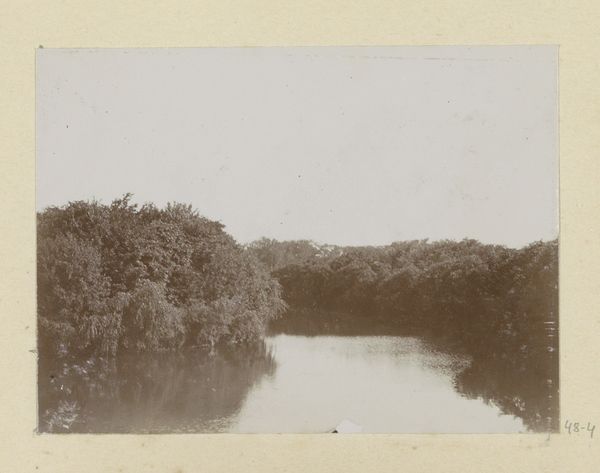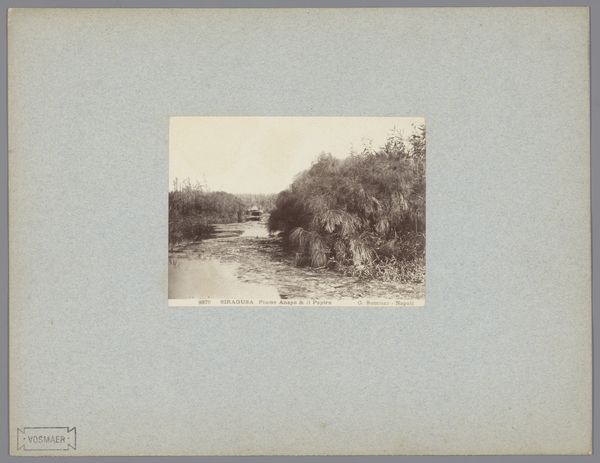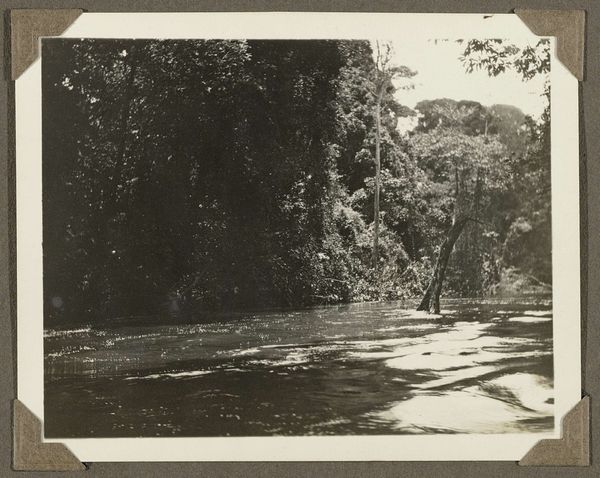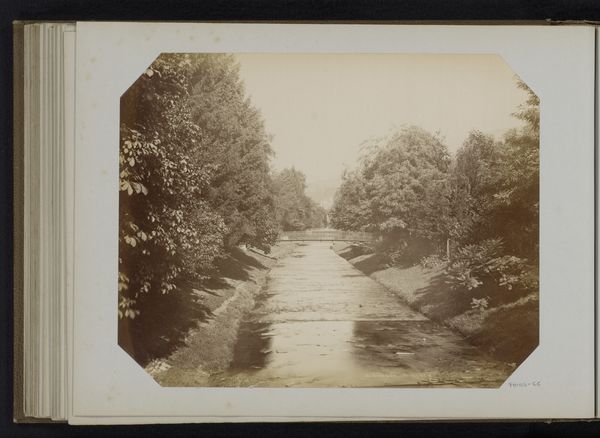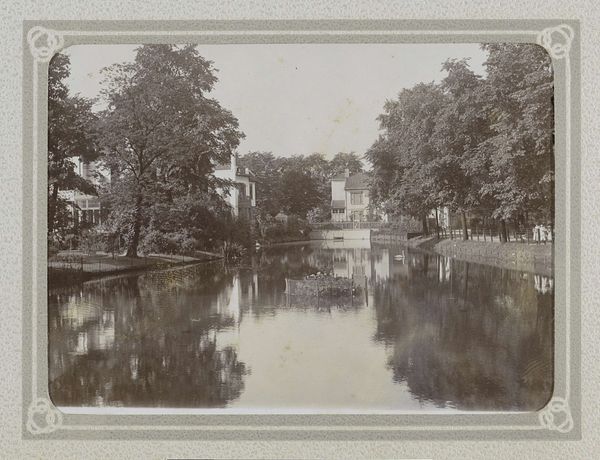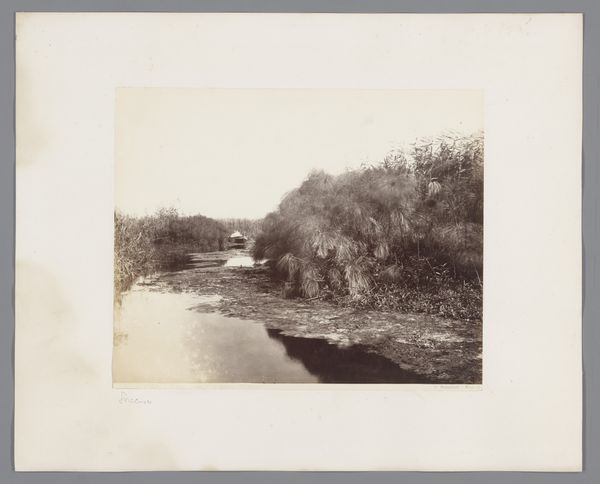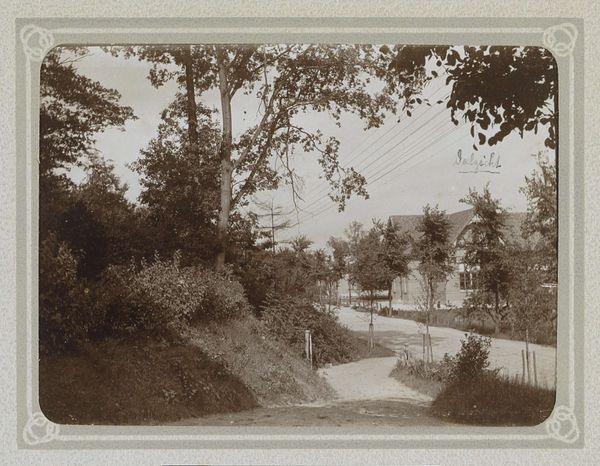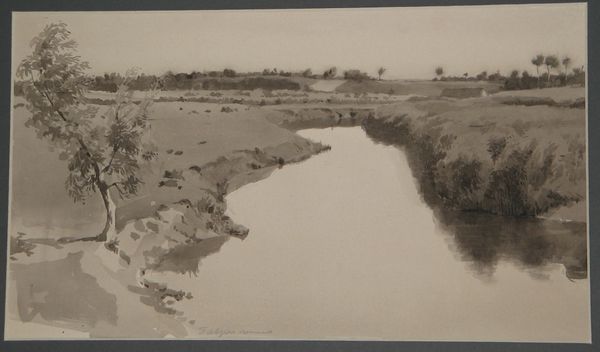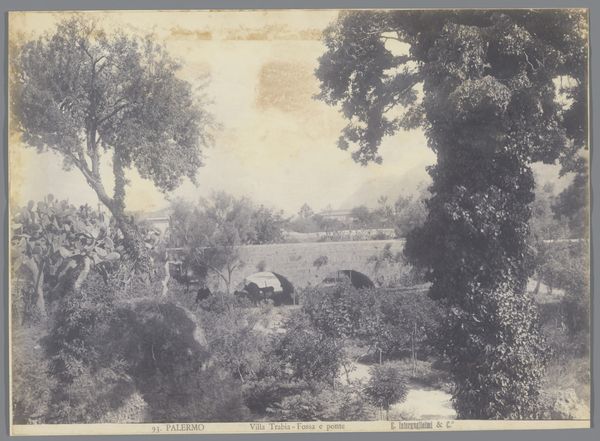
Landschap met rivier, een rij mannen op de kant en een zeilschip op het water, Pir Bazar, Iran c. 1885 - 1910
0:00
0:00
photography, albumen-print
#
still-life-photography
#
landscape
#
photography
#
orientalism
#
albumen-print
Dimensions: height 154 mm, width 206 mm
Copyright: Rijks Museum: Open Domain
Curator: Antoine Sevruguin’s albumen print, “Landscape with River, a Row of Men on the Bank and a Sailing Ship on the Water, Pir Bazar, Iran,” dating roughly between 1885 and 1910, presents a serene waterscape. It's imbued with a very quiet stillness. Editor: The first thing I notice is how material this stillness feels, grounded in the sepia tones and the textures rendered visible by the albumen print process. I'm struck by the contrast between the human presence—those figures lining the riverbank—and the rather imposing sailing ship cutting through the water. Curator: Absolutely. Sevruguin was deeply embedded in the cultural politics of late 19th-century Persia. This image can be read within the context of Orientalism, where photographs served to construct and disseminate specific visual narratives about the East for Western audiences, often exoticizing the scenes and the people within them. Who has access to and utilizes waterways for transportation? Who can watch idly by? Editor: Thinking about the albumen print as a process—coating paper with egg whites, sensitizing it with silver nitrate, exposing the negative—highlights the labor involved. It speaks to a particular moment in photographic history when the means of production were significantly different. Consider also, albumen printing was often linked with colonialism—the consumption of photographic imagery paralleled the economic consumption happening more broadly in colonial contexts. Curator: It brings forward important questions of representation and power. Are these individuals participating in leisure, or are they involved in commerce and labor somehow connected to the sailing ship? I wonder, what are the unspoken assumptions and biases shaping our perceptions of this landscape and its inhabitants? And how can this inform contemporary intersectional discourses? Editor: Precisely. And that sepia tone? That is partially the impact of time on this print but that is also from the albumen process, which used the sun. This really underlines the relationship between labor, image-making and materiality in the context of colonial influence. It makes you wonder about how consumption intersects with labor at every step in this image’s life cycle. Curator: Exploring these themes reminds us of the layered historical narratives embedded within even seemingly tranquil scenes. Thank you for reminding us about those elements that photography shares with the crafts. Editor: Thank you, engaging with the cultural implications gives us some modern context to engage with such an old material object.
Comments
No comments
Be the first to comment and join the conversation on the ultimate creative platform.
